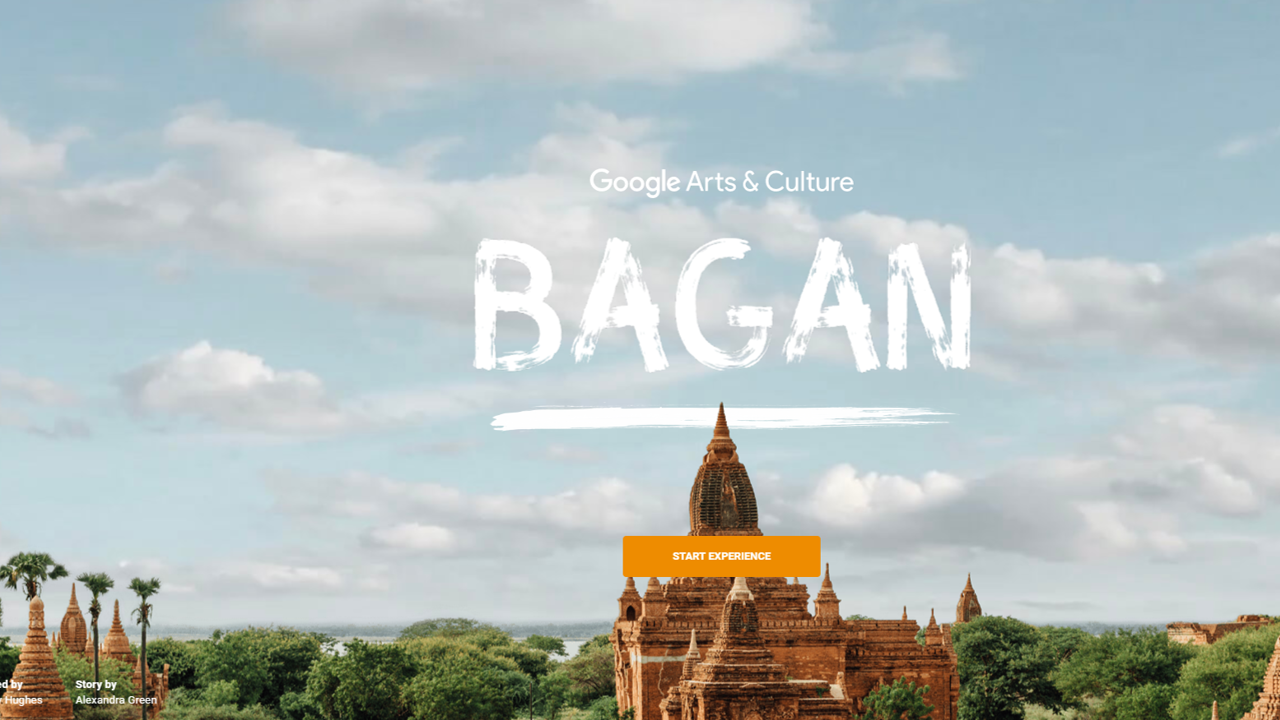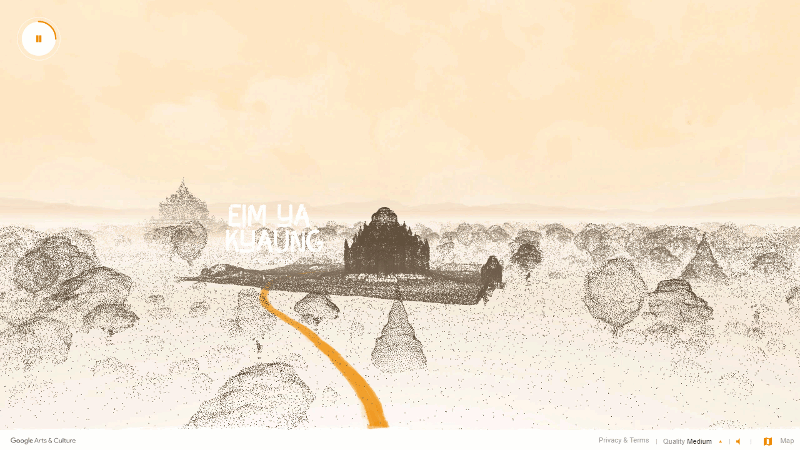1.2 Preserving Heritage: From an Analogue Past to a Digital Future
1.2.5 Case Study: Heritage at Risk
 |
|
Bagan, Google Arts & Culture, https://artsexperiments.withgoogle.com/bagan |
In this and the previous lesson you saw several concepts in cultural heritage, including the Authorised Heritage Discourse, and also explored the affordances of 3D models, especially in relation to issues such as authenticity and transparency in the context of replication and reconstruction. In this last section of the lesson you are expected to apply this knowledge to the case study of Bagan, an ancient city and a UNESCO World Heritage Site located in the Mandalay Region of Myanmar. From the 9th to 13th centuries, the city was the capital of the Pagan Kingdom, the first kingdom that unified the regions that would later constitute modern Myanmar. Over this period, more than 10.000 temples were built many of which have been destroyed throughout the years mostly because of extensive earthquakes. Today, less than 4.000 monuments are still standing in varying states of preservation. The last earthquake hit Bagan in 2016. Bagan's temples, stupas, monasteries and places of pilgrimage, as well as archaeological remains, frescoes and sculptures were ascribed a World Heritage status in 2019 (https://whc.unesco.org/en/list/1588).
Google Arts & Culture, in collaboration with CyArk, a nonprofit organization located in Oakland, California, United States that 'digitally records, archives and shares the world's most significant cultural heritage...' developed a multimodal experience (also see Ignite Course Storytelling for Digital Narratives & Blended Spaces) that includes 3D models of the landscape and of the surviving temples accompanied by audiovisual annotations and interactive 360o walkthroughs of the ancient temples.
To enter the virtual world click the following link: https://artsexperiments.withgoogle.com/bagan
 |
|
The Virtual Bagan Interface (Click to Enlarge) |
- Which are the institutions involved in the development and execution of this work? Is there an Authorised Heritage Discourse?
- What are the rhetoric means used in the presentation of the experience?
- Is the experience authentic?
- Can you argue that the aura of the original is migrated through this virtual experience?
- How transparent is the process of creating the project?
- Can you think of a heritage site in your country of origin that could benefit from such an approach? What would you have done differently?

